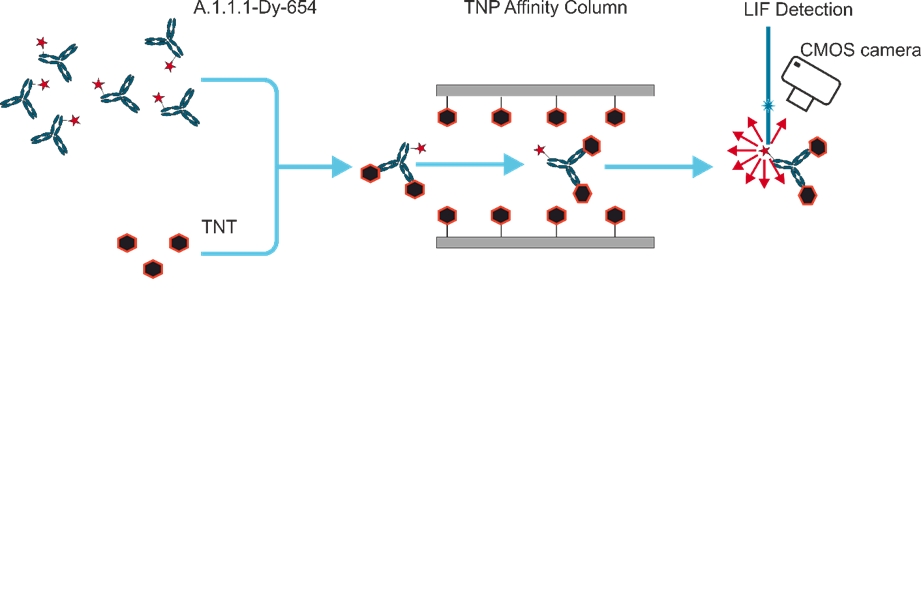The illegal use of explosives by terrorists and other criminals is an increasing issue in public spaces, such as airports, railway stations, highways, sports arenas, theaters, and other large buildings. Security in these environments can be achieved by a set of different means, including the installation of scanners and other analytical devices to detect ultra-small traces of explosives in a very short time-frame to be able to take action as early as possible to prevent the detonation of such devices. Unfortunately, an ideal explosive detection system still does not exist, which means that a compromise is needed in practice. Most detection devices lack the extreme analytical sensitivity, which is nevertheless necessary due to the low vapor pressure of nearly all explosives. In addition, the rate of false positives needs to be virtually zero, which is also very difficult to achieve. Here we present an immunosensor system based on kinetic competition, which is known to be very fast and may even overcome affinity limitation, which impairs the performance of many traditional competitive assays. This immunosensor consists of a monolithic glass column with a vast excess of immobilized hapten, which traps the fluorescently labeled antibody as long as no explosive is present. In the case of TNT occurring, some binding sites of the antibody will be blocked, which leads to an immediate breakthrough of the labeled protein, detectable by highly sensitive laser-induced fluorescence with the help of a Peltier-cooled CMOS camera. Liquid handling is performed with high-precision syringe pumps and chip-based mixing-devices and flow-cells. The system achieved limits of detection of 1 pM (1 ppt) of the fluorescent label and around 100 pM (20 ppt) of the explosive 2,4,6-trinitrotoluene (TNT). The total assay time is less than 8 min. A cross-reactivity test with 5000 pM solutions showed no signal by PETN, RDX, and HMX. This immunosensor belongs to the most sensitive and fastest detectors for TNT with no significant cross-reactivity by non-related compounds.

